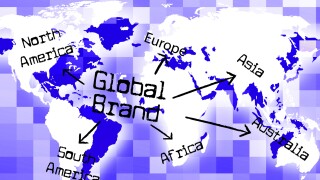Firm
The tie-up between Perkins Coie and Ashurst may generate some striking numbers, but independent IP firms need not worry yet, according to practitioners
Perkins Coie’s US patent prosecution strength could provide Ashurst with an opportunity to enter an untapped market in Australia, but it may not be easy
Mitesh Patel at Reed Smith outlines why the US Copyright Office and courts have so far dismissed AI authorship and how inventors can protect AI-generated works
Xia Zheng, founder of AFD China, discusses balancing legal work with BD, new approaches to complex challenges, and the dangers of ‘over-optimism’
Sponsored
Sponsored
-
Sponsored by ZaccoDesign rights are set to play an increasingly important role in strengthening global intellectual property strategies, say Tomas Wässingbo of Zacco and Christina Wainikka of the Confederation of Swedish Enterprise
-
Sponsored by TOPPAN Digital IPChris Evans of TOPPAN Digital IP outlines how AI, structured authoring, and secure technology are reshaping patent translation to improve quality, reduce costs, and accelerate international intellectual property filings in a managed environment
-
Sponsored by Wanhuida Intellectual PropertyHonghui Hu of Wanhuida Intellectual Property examines how the Supreme People’s Court has clarified the patent scope of drug combination inventions in a patent linkage dispute, offering rare guidance on claim interpretation of pharmaceutical combinations
-
Sponsored by Remfry & SagarShrabani Rout of Remfry & Sagar explores how Indian courts are navigating online defamation, including hyperlink republication and platform liability, as the ANI v Wikipedia case awaits a Supreme Court ruling
-
Sponsored by Anand and AnandAs the world changes and technology grows fast, the way we think about trademarks is also changing. Trademarks which are used to identify and protect brands, have traditionally included names and logos. However, in the future, they will take on new forms, reflect new consumer behaviour and require new legal rules to stay effective.
-
Sponsored by Anand and AnandIndia has taken a significant step towards simplifying its corporate consolidation framework with the codification of fast-track mergers under the Companies Act, 2013. Governed by Section 233 and read with Rules 25 and 25A of the Companies (Compromises, Arrangements and Amalgamations) Rules, 2016 (as amended), this mechanism enables a select category of companies to bypass the otherwise lengthy and complex National Company Law Tribunal (NCLT) process. In parallel, Section 234 of the Companies Act, 2013 facilitates cross-border mergers involving Indian and foreign companies, subject to regulatory approvals—most notably from the Reserve Bank of India (RBI). With recent regulatory reforms, India is positioning itself as a favourable jurisdiction for inbound mergers, including the increasingly relevant concept of reverse flipping—the relocation of company domiciles from foreign countries back to India.














![1200_17th_images_071812[1] 3.jpg](https://static.legalbenchmarkinggroup.com/dims4/default/46d4318/2147483647/strip/true/crop/3328x1872+0+174/resize/320x180!/quality/90/?url=https%3A%2F%2Fk4-prod-legal.s3.eu-west-1.amazonaws.com%2Fbrightspot%2Fae%2Fda%2F3bb43c034f46989edd34a5c00e5f%2F1200-17th-images-0718121-3.jpg)






